Did you know that the Indigo Rose tomato is not your typical red tomato? In fact, it boasts a stunning purple/blue/black color that will leave you mesmerized. This unusual tomato variety not only catches the eye but also offers a flavor profile that is unlike any other. Let’s dive into the world of Indigo Rose tomatoes and discover the secrets behind their unique flavors.
Key Takeaways:
- The Indigo Rose tomato is visually stunning with its purple/blue/black coloration.
- It has a well-balanced and complex flavor compared to other tomatoes.
- Indigo Rose tomatoes are smaller in size and perfect for salads and other tomato dishes.
- They offer various health benefits, including high levels of antioxidants.
- Indigo Rose tomatoes can be grown at home with proper care and attention.
Characteristics of Indigo Rose Tomatoes
When it comes to unique tomatoes, the Indigo Rose variety stands out with its distinctive appearance and flavor profile. These tomatoes are known for their deep purple to almost black skin, which develops a shiny, reflective, and iridescent bruise-colored shade as they mature in the sunlight. With a globular shape similar to cherry or salad tomatoes, Indigo Rose tomatoes weigh a little over an ounce, making them perfect for both snacking and cooking.
What sets Indigo Rose tomatoes apart is their mild flavor profile with a hint of sweetness and higher acidity levels. Each bite offers a tender texture and a classic sour tomato aftertaste, providing a delightful and unique taste experience. Whether incorporated into salads or used in various tomato-based dishes, their distinct flavor is sure to enhance any culinary creation.
To better understand the characteristics of Indigo Rose tomatoes, here’s a visual representation:
| Appearance | Flavor Profile |
|---|---|
|
With their unique aesthetics and delightful flavor, Indigo Rose tomatoes are a fantastic addition to any garden and kitchen.
Health Benefits of Indigo Rose Tomatoes
Indigo Rose tomatoes offer a variety of health benefits that make them a nutritious addition to your diet. These tomatoes are not only visually appealing, but they also contain high levels of essential vitamins, minerals, and antioxidants.
One of the key health benefits of Indigo Rose tomatoes is their high content of vitamins A and C. Vitamin A is essential for maintaining a healthy immune system and good eyesight, while vitamin C is known for its immune-boosting properties and role in collagen production.
In addition to vitamins, Indigo Rose tomatoes are rich in potassium, iron, and dietary fiber. Potassium is important for maintaining proper heart function and regulating blood pressure, while iron supports healthy red blood cell production. The dietary fiber in these tomatoes promotes digestive health and helps prevent constipation.
However, one of the standout health benefits of Indigo Rose tomatoes lies in their antioxidant content. These tomatoes contain two powerful antioxidants: lycopene and anthocyanin.
Lycopene is a carotenoid pigment that gives tomatoes their vibrant red color. It has been linked to various health benefits, including reducing the risk of certain types of cancer, especially prostate cancer. Lycopene is also known for its antioxidant properties, which help protect cells from damage caused by harmful free radicals.
Anthocyanin, on the other hand, is responsible for the unique purple/blue/black color of Indigo Rose tomatoes. It is a type of flavonoid known for its antioxidant and anti-inflammatory properties. Studies have shown that anthocyanins may have a range of health benefits, including reducing the risk of heart disease, improving cognitive function, and supporting weight management.
Incorporating Indigo Rose tomatoes into your diet can be a great way to boost your antioxidant intake and promote overall health.
Summary of Health Benefits:
| Health Benefits | Description |
|---|---|
| Vitamins A and C | Support a healthy immune system and good eyesight |
| Potassium | Regulates blood pressure and maintains proper heart function |
| Iron | Supports healthy red blood cell production |
| Dietary Fiber | Promotes digestive health and prevents constipation |
| Lycopene | Reduces the risk of certain types of cancer and protects against cell damage |
| Anthocyanin | Reduces the risk of heart disease, improves cognitive function, and supports weight management |
Growing Indigo Rose Tomatoes
Indigo Rose tomatoes are a fantastic choice for home gardeners due to their compact size and ease of cultivation. These tomato plants are well-suited for small spaces and can be grown in both gardens and containers. In this section, I will guide you through the process of growing Indigo Rose tomatoes, including planting, care, and maintenance tips.
Planting Indigo Rose Tomatoes
Before planting Indigo Rose tomatoes, it’s important to choose a location that receives at least six hours of full sunlight each day. These plants thrive in well-draining soil with a looser texture. Start the seeds indoors 6-8 weeks prior to the last frost, and transplant the young plants into the garden or pots once the risk of frost has passed. Space the plants 24-36 inches apart, with 3-4 feet between rows, to ensure adequate airflow and room for growth.
Care for Indigo Rose Tomatoes
Regular watering is crucial for the proper growth of Indigo Rose tomatoes. The soil should be kept evenly moist, but avoid overwatering as it can lead to waterlogged roots. Apply a layer of mulch around the plants to help retain moisture and suppress weed growth.
Fertilization is important to provide the plants with essential nutrients. Start by incorporating well-composted organic matter into the soil before planting. As the plants grow, you can use a balanced fertilizer according to the package instructions to promote healthy foliage and fruit development.
Protecting Indigo Rose tomatoes from common pests and diseases is vital for a successful harvest. Regularly inspect the plants for signs of pests such as aphids, tomato hornworms, and flea beetles. If infestations occur, you can apply organic pest control methods or consult with a local garden center for appropriate treatments.
Common tomato diseases, such as blight, can be prevented by maintaining good airflow around the plants, avoiding overhead watering, and removing any diseased foliage or fruit promptly.
| Aspect | Requirements |
|---|---|
| Sunlight | At least 6 hours of full sun per day |
| Soil | Well-draining, loose soil |
| Watering | Regular, even moisture; avoid overwatering |
| Fertilization | Incorporate organic matter before planting; apply balanced fertilizer as needed |
| Pest Control | Vigilant inspection and treatment of common tomato pests |
| Disease Prevention | Maintain good airflow, avoid overhead watering, remove diseased foliage and fruit |
Where to Buy Indigo Rose Tomato Plants
If you’re interested in cultivating the unique Indigo Rose tomato variety, you can find Indigo Rose tomato plants from various sources. Whether you prefer shopping in person or online, there are plenty of options available to purchase these plants for your garden.
For those who enjoy browsing through garden centers and nurseries, you can check out their selection of Indigo Rose tomato plants. These local establishments often offer a wide range of tomato varieties, including the Indigo Rose.
If you prefer the convenience of online shopping, there are reputable online sellers that provide high-quality seeds and plants. Some trusted online sources where you can buy Indigo Rose tomato plants include:
- Hoss Tools
- Territorial Seed Company
- Nichols Garden Nursery
- High Mowing Organic Seeds
- Johnny’s Selected Seeds
These online sellers offer a convenient way for home gardeners to purchase Indigo Rose tomato plants and have them delivered right to their doorstep. You can explore their websites to find the Indigo Rose tomato plants that suit your needs and place your order with ease.
Whichever option you choose, whether it’s shopping in person at a garden center or ordering online, you can find reputable sources to buy Indigo Rose tomato plants and embark on your journey to growing this unique and visually striking variety.
Recipes Using Indigo Rose Tomatoes
Indigo Rose tomatoes are not only visually stunning but also a versatile ingredient in the kitchen. Their unique color and flavor make them perfect for a variety of recipes.
1. Indigo Rose Tomato Salad
Create a vibrant and refreshing salad by combining sliced Indigo Rose tomatoes with mixed greens, thinly sliced red onions, and crumbled feta cheese. Drizzle with balsamic vinaigrette and garnish with fresh basil leaves for an extra burst of flavor.
2. Homemade Tomato Sauce
Indigo Rose tomatoes make a fantastic addition to homemade tomato sauce. Simmer them with garlic, onions, and herbs like basil and oregano for a rich and flavorful sauce. Use it as a base for pasta dishes, pizzas, or even as a dipping sauce for breadsticks.
3. Caprese Salad with Indigo Rose Tomatoes
Put a twist on the classic Caprese salad by using Indigo Rose tomatoes. Combine halved or quartered Indigo Rose tomatoes with mozzarella pearls, fresh basil, and a drizzle of balsamic glaze. Serve as an appetizer or side dish for a burst of color and unique flavor.
Whether you’re looking to brighten up a salad, add depth to your sauces, or create a visually stunning dish, Indigo Rose tomatoes are a fantastic choice. Let your culinary creativity soar with these unique tomatoes!
Caring for Indigo Rose Tomato Plants
Growing healthy and vibrant Indigo Rose tomato plants requires proper care and attention. Here are some essential tips to ensure their optimal growth and productivity.
Watering
Indigo Rose tomato plants need regular watering to thrive, but it’s crucial to avoid overwatering, as excessive moisture can lead to root rot and other fungal diseases. Keep the soil consistently moist, providing enough water to penetrate the root zone without causing waterlogging. Monitor the moisture levels by checking the soil’s moisture content with your finger. Water deeply and evenly, especially during hot and dry spells, to ensure the plants’ hydration needs are met.
Fertilization
To promote healthy growth and abundant fruit production, fertilize Indigo Rose tomato plants every few weeks. Use a fish emulsion blend or a balanced organic tomato fertilizer to provide the necessary nutrients. Apply the fertilizer according to the package instructions, taking care not to over-fertilize, as excessive nitrogen can result in lush foliage at the expense of fruit formation. Regular fertilization will help maintain vigorous plants and enhance the flavor and quality of the tomatoes.
Pest Protection
Indigo Rose tomato plants are prone to pests like flea beetles and tomato hornworms, which can cause significant damage if left unchecked. Implement preventive measures such as regular inspections, handpicking pests, and using organic pest control methods. Apply organic insecticides or companion planting techniques to deter pests and create a favorable environment for beneficial insects that help control pest populations. Maintaining a clean garden area and removing plant debris can also minimize pest infestations.
Providing Support
As Indigo Rose tomato plants grow, they can become top-heavy and require support to keep the plants and fruits off the ground. Stake the plants using bamboo poles, tomato cages, or trellises to provide stability and prevent branches from breaking under the weight of the fruit. Proper support will promote better air circulation, minimize the risk of fungal diseases, and facilitate easier plant maintenance, such as pruning and harvesting.
Harvesting
Indigo Rose tomatoes have a late maturation period and can be harvested when the shaded side of the fruits turns red, typically from August through October. Gently twist or cut the ripe tomatoes from the vine to avoid damage. Harvesting at the right stage of ripeness ensures optimal flavor and texture. Enjoy the bountiful harvest of these uniquely colored and delicious tomatoes in your culinary creations!
Benefits of Grafting Indigo Rose Tomato Plants
Grafting Indigo Rose tomato plants can provide numerous benefits, particularly in terms of disease resistance. These plants exhibit enhanced resistance against common tomato diseases such as fusarium and verticillium. In trials, grafted Indigo Rose tomato plants have shown triple the yields compared to normal ungrafted plants, making them a great option for gardeners seeking higher productivity.
For gardeners facing challenges with diseases, grafting is highly recommended. This technique involves joining the rootstock of a disease-resistant plant with the scion (top part) of the desired Indigo Rose variety. By combining the disease resistance of the rootstock with the unique qualities of the Indigo Rose tomato, growers can improve overall plant health and increase productivity in their gardens.
Grafting has proven to be an effective strategy for managing diseases and boosting plant vigor. It provides an opportunity to overcome the limitations imposed by soilborne pathogens and other environmental factors. By grafting Indigo Rose tomato plants onto disease-resistant rootstocks, gardeners can create a more resilient and disease-resistant crop, ensuring a bountiful harvest of these exquisite purple tomatoes.
Grafting Process
Grafting involves carefully joining the rootstock and scion to ensure successful integration. Here are the steps to graft Indigo Rose tomato plants:
- Select disease-resistant rootstock plants that are compatible with Indigo Rose tomatoes.
- Prepare the rootstock and scion by making diagonal cuts just above the cotyledon leaves.
- Align the cambium layers—the green inner layers of the rootstock and scion—making sure they match as closely as possible.
- Bind the rootstock and scion together using a grafting clip or a grafting tape.
- Place the grafted plants in a warm and humid environment, such as a greenhouse or a high-humidity chamber.
- Monitor the graft union for successful healing and growth.
- Once the graft has healed, transplant the grafted plants to the desired location in the garden.
Grafting Indigo Rose tomato plants requires careful attention to detail and proper techniques to ensure a successful union. It is advisable to gain some experience or seek guidance from experienced grafters before attempting grafting yourself.
Grafting: A Tool for Disease Management
Grafting is a valuable tool for managing diseases in tomato plants, and Indigo Rose tomatoes are no exception. By leveraging the disease-resistant properties of rootstocks, gardeners can protect their Indigo Rose plants from serious threats like fusarium and verticillium wilt. This method minimizes the risk of disease infections and allows growers to focus on nurturing healthy and thriving plants.
Additionally, disease-resistant rootstocks can improve overall plant health and vigor. They can enhance the plant’s ability to take up water and nutrients, ensuring proper growth and development. By grafting Indigo Rose tomato plants, gardeners can create a robust and resilient crop that withstands diseases and environmental stressors, leading to a successful and satisfying harvest.
The Fascination with Indigo Rose Tomatoes
Since its introduction, the Indigo Rose tomato has gained popularity among gardeners for its unique appearance and potential health benefits. The deep purple, almost black color captivates people’s attention, making it a fascinating addition to gardens and culinary creations. Its unusual color and complex flavor profile make it a standout choice among tomato enthusiasts. Indigo Rose tomatoes have become a favorite among gardeners who appreciate the beauty and culinary possibilities of this remarkable variety.
The Indigo Rose tomato’s popularity stems from its captivating visual appeal and intrigue. The rich, deep purple hue reflects a sense of mystery and allure, making it a visually striking addition to any garden. When incorporated into culinary creations, the Indigo Rose tomato adds a touch of elegance and uniqueness that elevates dishes to new heights.
Not only does the Indigo Rose tomato capture attention with its appearance, but it also offers a flavor experience like no other. The complex combination of sweetness and acidity creates a well-balanced taste that stands out among other tomato varieties. Whether used in salads, sauces, or as a garnish, the Indigo Rose tomato adds a burst of flavor that leaves a lasting impression.
In the words of renowned chef Julia Child, “The Indigo Rose tomato brings a level of sophistication and fascination to dishes like no other variety. Its deep purple skin and complex flavor profile make it an absolute delight for culinary enthusiasts.”
Furthermore, the Indigo Rose tomato’s potential health benefits have contributed to its popularity. Packed with antioxidants, vitamins A and C, and other essential nutrients, it offers a nutritious addition to meals. These antioxidants, including anthocyanin, help protect the body against cell damage and inflammation, promoting overall well-being.
Whether it’s the indigo rose color, the extraordinary flavor, or the potential health benefits, the fascination with Indigo Rose tomatoes continues to grow. As more gardeners and chefs discover the beauty and culinary possibilities of this remarkable variety, its popularity is set to rise even further.
Indigo Rose Tomato Popularity Comparison
| Aspect | Indigo Rose Tomato | Other Tomato Varieties |
|---|---|---|
| Color | Deep purple, almost black | Red, yellow, orange |
| Flavor Profile | Complex, well-balanced | Varies (sweet, tangy, acidic) |
| Health Benefits | High in antioxidants, vitamins, and nutrients | Varies (nutrient content depends on variety) |
Tips for Growing Indigo Rose Tomatoes
When it comes to successfully growing Indigo Rose tomatoes, there are a few important tips and tricks to keep in mind. Whether you’re a seasoned gardener or just starting out, these tips will help you cultivate healthy and vibrant plants that will yield a bountiful harvest of these unique and flavorful tomatoes.
1. Choose a sheltered spot: Indigo Rose tomatoes thrive in cooler or shorter-season environments. To create the ideal growing conditions, select a spot in your garden that provides some shelter from strong winds and extreme temperatures.
2. Provide additional protection: Early in the growing season, it’s beneficial to provide some extra protection for your Indigo Rose plants. This can include using row covers or cloches to shield the young plants from cold temperatures and frost.
3. Know when they’re ripe: Knowing when Indigo Rose tomatoes are ripe and ready to harvest is essential. Look for softened fruit with dull purple-brown skins and red bottoms. Avoid picking shiny, blue-purple tomatoes as they are not yet ripe. Harvesting at the right time ensures optimal flavor and texture.
4. Consider grafting: Indigo Rose tomatoes do not have natural resistance to fusarium and verticillium, which are common tomato diseases. Consider grafting your Indigo Rose plants onto a disease-resistant rootstock to combat these diseases and promote healthier growth.
Tip: Grafting involves joining the rootstock of a disease-resistant plant with the scion (top part) of the Indigo Rose tomato. This technique enhances disease resistance and can result in higher yields.
By following these tips, you’ll be well on your way to growing thriving Indigo Rose tomato plants. Get ready to enjoy the unique flavors and stunning beauty of these remarkable tomatoes in your own garden!
Conclusion
After delving into the world of the indigo rose tomato, it is clear why this unique variety has garnered such attention. With its deep purple, blue, and black skin, the indigo rose tomato is visually stunning, making it a standout choice for gardeners. But its appeal goes beyond aesthetics.
The indigo rose tomato offers a flavor profile that is both well-balanced and complex, setting it apart from other tomato varieties. Its acidic yet sweet taste, combined with a tender texture, makes it a versatile ingredient in various culinary creations. Whether used in salads, sauces, or as an accompaniment to other dishes, the indigo rose tomato adds a delightful pop of color and flavor.
Not only is the indigo rose tomato pleasing to the palate, but it also brings numerous health benefits to the table. Rich in antioxidants like lycopene and anthocyanin, this tomato variety provides protection against cellular damage and inflammation. It is also a good source of vitamins A and C, potassium, iron, and dietary fiber, supporting overall well-being.
Growing and caring for indigo rose tomato plants require attention to detail. Providing adequate sunlight, well-draining soil, and regular watering are crucial for optimal growth. Proper fertilization and protection against pests and diseases are also essential. For those faced with challenges such as fusarium and verticillium, grafting can increase disease resistance and improve yields.
In summary, the indigo rose tomato offers a feast for the senses. Its captivating appearance, unique flavor profile, and health benefits make it a delightful addition to any garden and kitchen. As the indigo rose tomato continues to captivate gardeners and chefs alike, it is no wonder this extraordinary variety has gained such popularity.

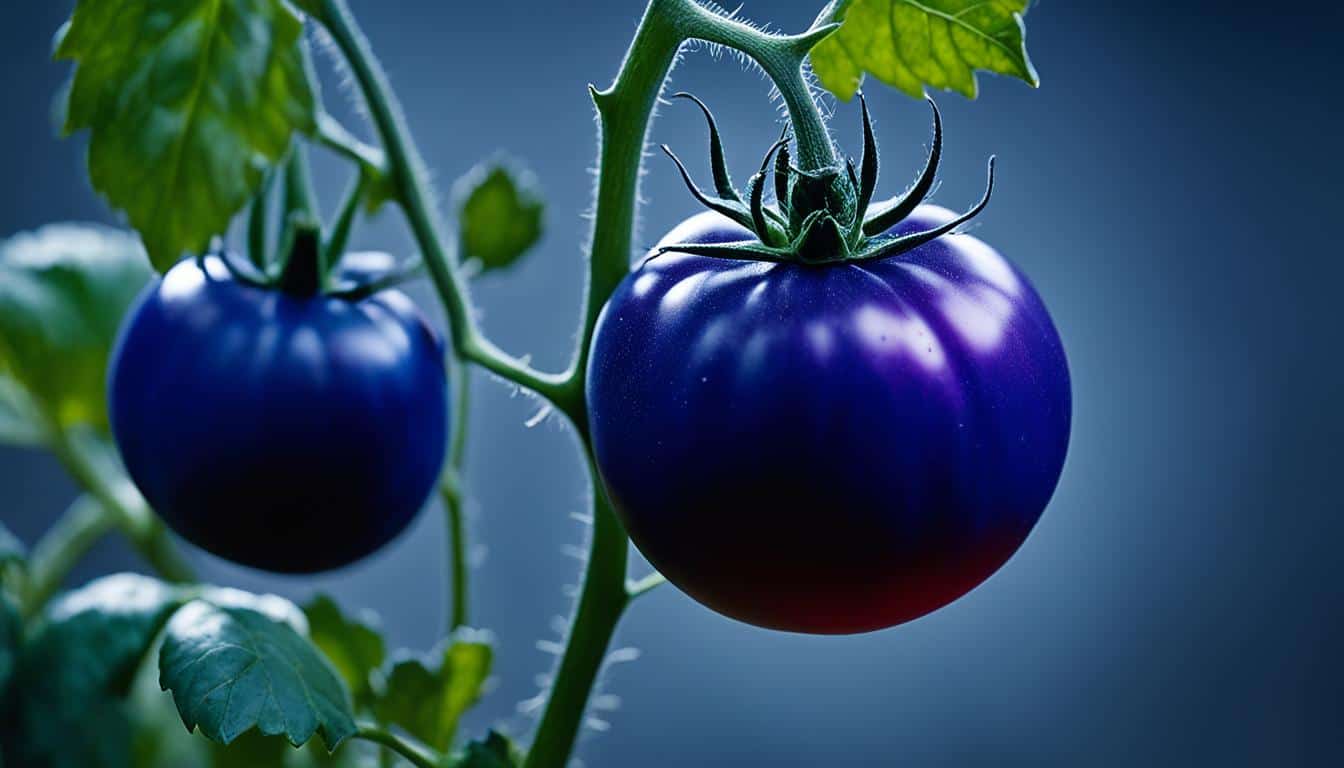
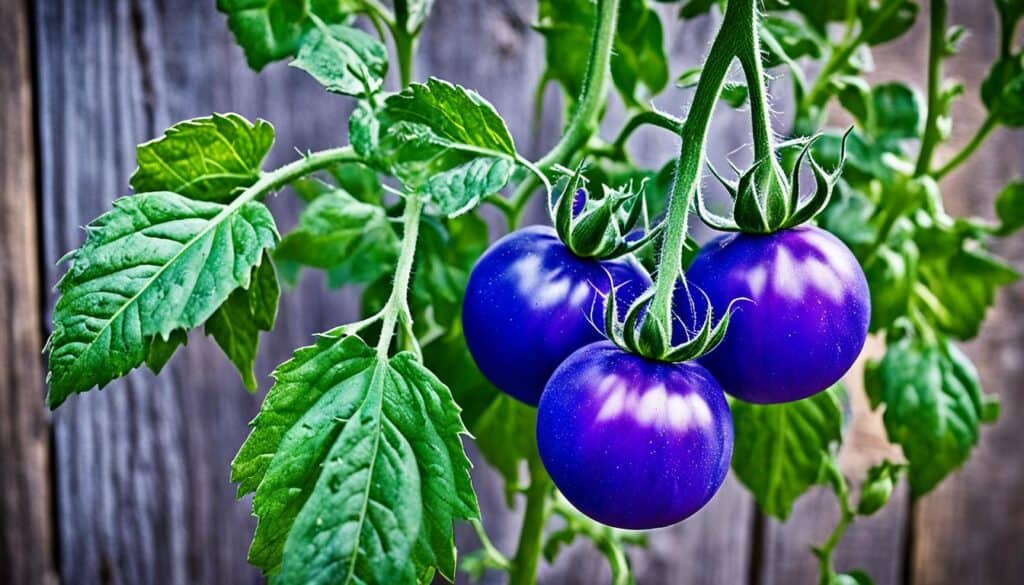


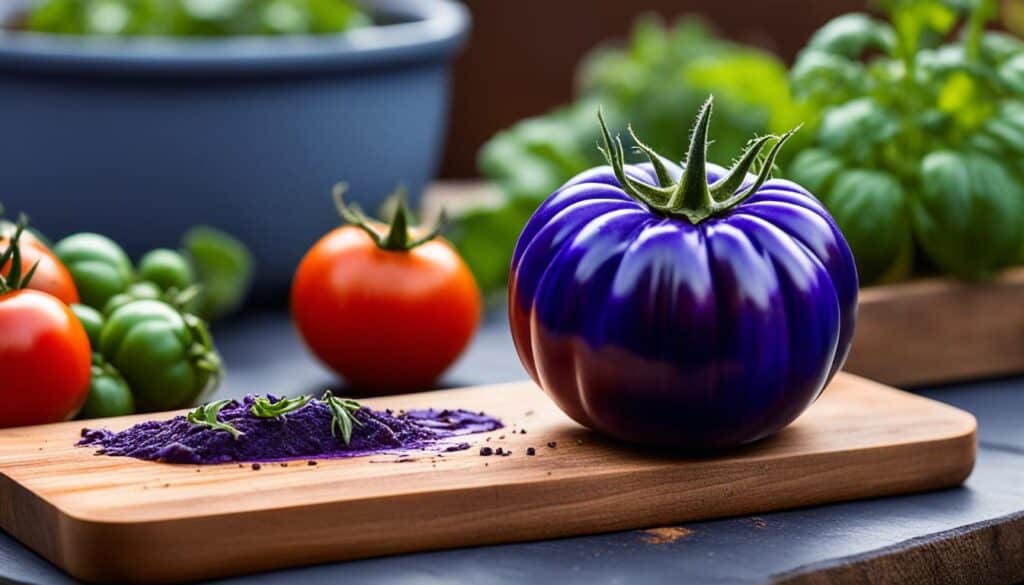
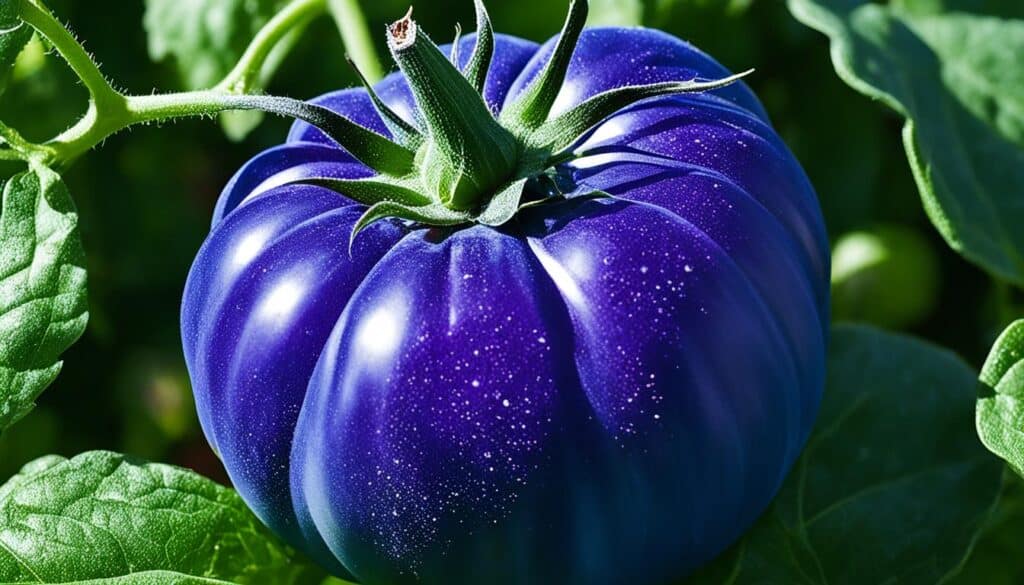

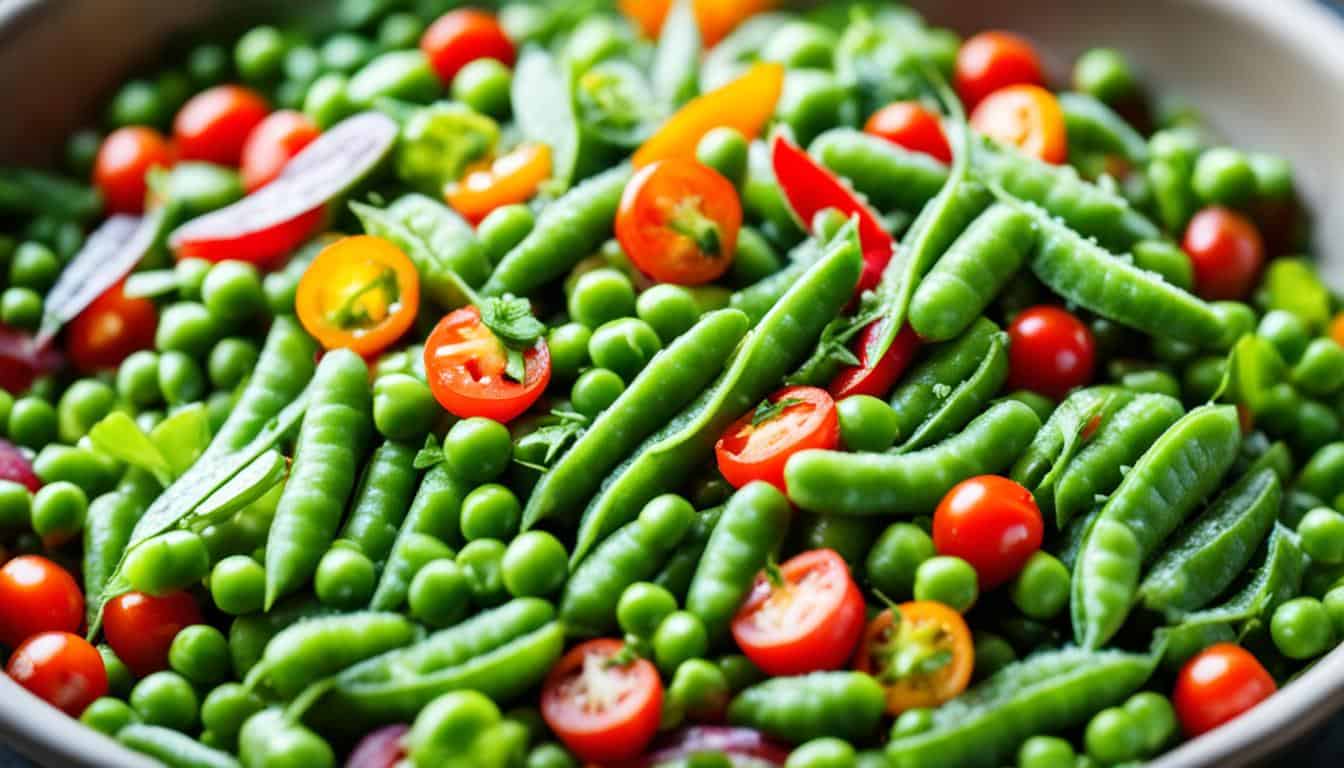
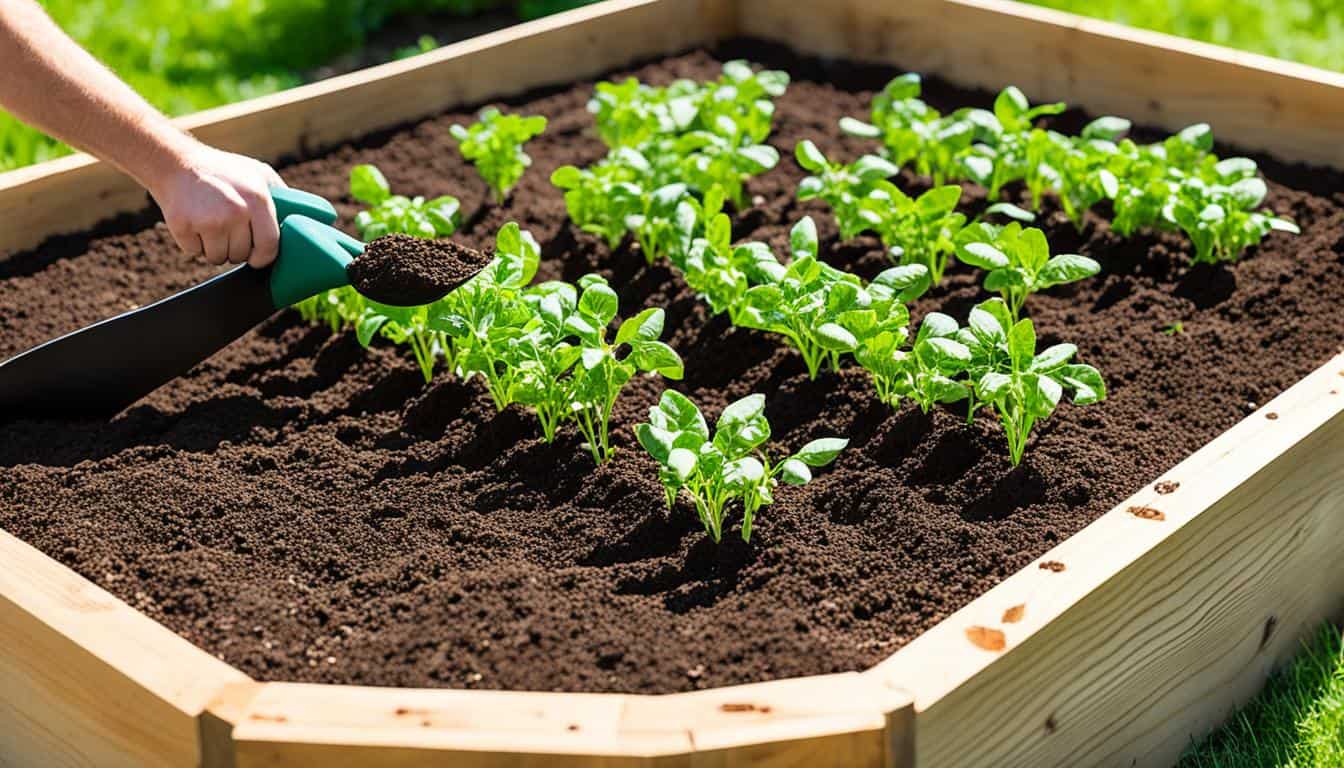
Leave a Reply